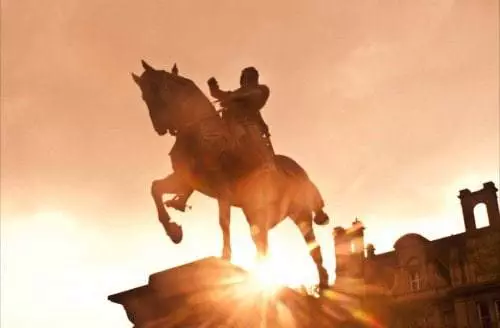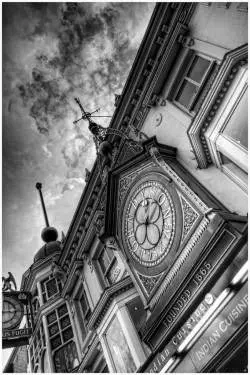
At the start of his notorious poem ‘v.’, Tony Harrison places as his epigraph some words from none other than Arthur Scargill: “My father still reads the dictionary every day. He says your life depends on your power to master words.”
The poem is a fitting introduction for our subject, set as it is in the vast and impressive Holbeck Cemetery at the top of Beeston Hill, from where one can observe an unrivalled, almost dreamlike vision of the entire breadth of the Leeds cityscape.
A fitting introduction because for one roving band of amateur photographers, it is not mastering words but mastering pictures, sights and scenes that is their art.
Throughout August I have been writing for The Culture Vulture, travelling around Yorkshire, visiting towns and villages scattered across the county, eating and drinking at the cafes my readers recommend, visiting galleries and exhibitions and local festivals where the warm and generous folk of our region have invited me along.
One of my first appointments was with Exposure Leeds, meeting seventeen photographers as they gathered on Boar Lane before setting out around the city centre with a mission: to capture from a new perspective the sights around the Leeds cityscape which are, to us all, so familiar and everyday.
The result is a forty-page book of incredible, surprising, amusing, touching photographs: An Unguide to Leeds City Centre.
When I was younger I took Scargill’s advice, and tried to make words rather than pictures my art. When I studied English Literature at university, one of the most important topics in literary theory which inspired me and informed much of my understanding of and approach to language was the work of the Russian Formalists of the early twentieth century.
One of their number, Viktor Shklovsky, wrote an essay entitled Art as Technique in which he argued the purpose of poetic language as defamiliarization or estrangement: presenting something familiar as if it the writer is witnessing it and describing it for the first time.
Shklovsky asserts that “art exists that one may recover the sensation of life; it exists to make one feel things, to make the stone stony.” The ultimate purpose is not merely aesthetic, but rather to draw out the sensations that things inspire “as they are perceived and not as they are known”.
As an outsider – a writer sheepishly following these photographers, true artists capturing the world as it is rather than reporting on it in passivity – I believe this philosophy is at the heart of what Exposure Leeds have done.
 Look at the picture of Dyson’s clock portrayed in an almost Gothic aesthetic beneath threatening skies; look at the rainbow colours painted onto the wall of an otherwise seemingly anonymous grey building; look at the setting sun in its final blaze of day-ending glory behind the proud statue of the Black Prince on City Square.
Look at the picture of Dyson’s clock portrayed in an almost Gothic aesthetic beneath threatening skies; look at the rainbow colours painted onto the wall of an otherwise seemingly anonymous grey building; look at the setting sun in its final blaze of day-ending glory behind the proud statue of the Black Prince on City Square.
Skip through the pages and merely glance at the pictures or study every one with forensic intensity: either way, you’ll find a city as you’ve never seen it and never sensed it before. You’ll feel the breeze beneath the purple-grey skies overhanging Brewery Wharf; you’ll sense the urban desolation of the tumbledown old buildings along Kirkgate; you’ll taste the thick brown slime at the bottom of a discarded Starbucks cup left on top of a bin (whether you like it or not).
They have written their city anew, penning an intriguing and enchanting series of vignettes in their every photograph. Like poets, photographers – I’m sure they would admit – are a curious species, inevitably on the margins looking in, at once observing and commenting, teaching and inspiring. The crucial difference is that photographers would not put it quite so pompously.
As I followed one of the groups headed south towards Holbeck, office workers en route to the station from Bridgewater Place and beyond all eyed the group warily as they wielded their cameras at signs, street furniture, rooftops, and sometimes passers-by.
For whereas the poet pens verses in his retreat, only occasionally venturing out to get drunk and say enigmatic things to women, before writing about it all when he retires to his cave, the photographer is always there. Though their craft compels them to seek obscurity and concealment, their tool makes them instantly visible, easy to spot – which in turn makes even more difficult their challenge of capturing a moment as it happens and the senses as they are perceived.
But the moments they capture in these photographs look anew at the sensations contained in the world around us all, the landscape so familiar and quotidian to our tired eyes.
Exposure Leeds, in this wonderful little book, have made the stone stony.
This article was written for the launch of Exposure’s ‘Unguide to Leeds City Centre’ available here. Copies will also be available at their next talk & social with Kirsteen Ashton on Wednesday 7th September.